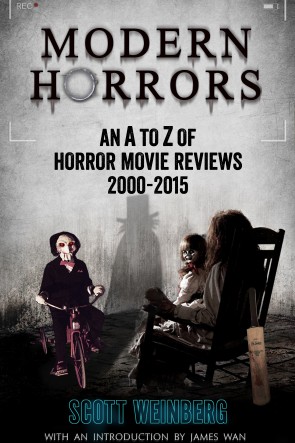Exclusive Review: BEDLAM (2015){0}
The ’60s was a time of turmoil for mental health care facilities, with many decrying the treatment of mental illness as being far more damaging than helpful. So extreme were some of these methods that many former patients banded with anti-psychiatric movements and even referred to themselves as ‘survivors.’ Whilst distorting mental patient “care” to inconceivable levels, writer/director Chew Barker’s Bedlam [Chew Barker? Isn’t that the big hairy dude from Star Wars? – Ed.] offers a disquieting firsthand account of the controversial treatment protocols many inmates endured.
From the get-go it’s clear Barker is intent on inducing as much shock therapy on the viewer as on Bedlam’s inmates, as we’re treated to a patient getting his incisors wrenched out –shot in grainy black and white for an even more stirring effect. We are then swiftly introduced to George Kilner (Guy Edmonds) who clearly has issues with sundry voices in his head, a severe case of itchy scalp syndrome, and visions of people sporting Rorschach inkblot masks. It’s all pretty befuddling but it works its mysterious magic, putting us firmly in George’s unstable mindset.
George is admitted to Bedlam Hospital under the care of Dr. Black (Peter McAllum), a firm believer that mental ailments are part of our genetic code and further exacerbated by masturbation and fornication. The first notes we see the good doctor jot down include the word ‘castration’, giving us a pretty clear idea of the surprises he has in store for poor old George.
Once condemned to the mental ward George encounters a motley crew of unhinged eccentrics including the self-mutilating ‘Cutter’ (Gary Boulter) and glamorous Hollywood has-been, Sofia Louis (Cassandra Swaby). The patients are all under the peremptory watch of the delightfully despicable orderly Keeper (John Boxer), whose lust to dominate is much more of a cause for concern than any of the inmates’ ailments. Despite being the film’s villain, Boxer provides most of the film’s lighter moments in the form of memorably madcap faux-antipsychotic medication adverts and the family friendly game show “The Wheel of Torture.” These scenes provide a sharp contrast to the rest of the film and are wisely rationed throughout to keep things engaging.
Giving any more of the plot away would do the film disservice; suffice it to say there are surprises aplenty. While some may write Bedlam off as a lewd and confused film, I appreciated the method to Barker’s madness as his peculiar palette paints a horrifyingly authentic picture of mental imbalance; at times it brought back memories of the toxicant effect Ellen Burstyn’s bouts of madness had on me in Requiem for a Dream. Most films set in mental institutions generally miss the boat when the patients are loonified beyond the point of belief, but Bedlam is one of the few exceptions. By no means are there any award-winning performances in this cuckoo’s nest but the characters’ arcane absurdities are surprisingly arresting.
Behind the high-falutin medical procedures and overblown characters, Bedlam is a poignant and darkly comical commentary on the mental illness treatment of yore. Sure, the film is pretty rough around the edges, but get past that and you’ll find something that’s satisfyingly therapeutic.
Howard Gorman (@HowardGorman)
BEDLAM is released on UK VOD on March 16, and on US DVD/VOD in April.








